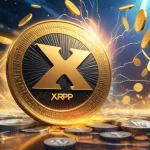Ripple’s Bold XRP Roadmap: $500M Investment Fuels Global Finance Overhaul

The XRP Roadmap: Ripple President Unveils Bold Next Steps for Global Finance
Ripple is setting its sights on transforming the financial world with a newly revealed roadmap for XRP and the XRP Ledger (XRPL), announced at the Ripple Swell 2025 event on November 4-5. President Monica Long laid out a strategy that prioritizes real-world utility over speculative hype, backed by a hefty $500 million investment round valuing the company at $40 billion. This isn’t just talk—it’s a push to redefine how digital assets meet traditional finance.
- Dual focus: supporting financial institutions in adopting digital assets and innovating the XRP Ledger.
- New lending protocol and stablecoin integration to drive XRP’s practical use cases.
- $500 million investment, $95 billion in payment volume, and over $1 billion in RLUSD market cap.
Ripple’s Dual Strategy: Bridging Fiat and Crypto
At the heart of Ripple’s vision are two distinct but interconnected goals. First, the company is working to guide banks and financial institutions into the digital asset space, positioning itself as a trusted intermediary between the clunky world of fiat currencies and the nimble realm of cryptocurrencies. Second, Ripple is pouring resources into enhancing the XRP Ledger, the blockchain technology that powers XRP, its native token. For those new to this, the XRPL is built for speed and efficiency, enabling transactions—like sending money across borders—that settle in seconds for a fraction of the cost of traditional systems like SWIFT.
Monica Long emphasized that these two pillars aren’t separate; they fuel each other. By getting institutions on board, Ripple builds trust and adoption. By upgrading the XRPL, they create a platform worth adopting. It’s a cycle of momentum, akin to a snowball rolling downhill, picking up size and speed as utility and confidence grow. This approach isn’t about chasing quick retail hype—it’s about laying down infrastructure for lasting change in global finance. For more on Ripple’s strategic vision, check out Ripple’s next big steps.
Innovations on the XRPL: Lending and Stablecoins Take Center Stage
Some of the most exciting updates center on the XRP Ledger itself, which has already seen major improvements in speed, reliability, and scalability over recent years. A standout announcement is the upcoming lending protocol, a system designed to let users borrow and lend funds directly on the blockchain. Think of it as cutting out the middleman—no need for a bank to approve a loan or charge hefty fees. While specifics are still scarce, this could mirror decentralized finance (DeFi) platforms on networks like Ethereum, where smart contracts (self-executing code on the blockchain) manage loans with assets as collateral. If done right, it could open up credit access globally, but let’s not ignore the risks—smart contract bugs or hacks have cost millions in other DeFi projects.
Then there’s the integration of stablecoins, digital currencies tied to stable assets like the U.S. dollar to avoid the price volatility of tokens like Bitcoin or XRP itself. Ripple’s own stablecoin, RLUSD, has already hit a $1 billion market capitalization, a significant milestone that puts it in the conversation with bigger players like USDC or USDT, though still far behind their multi-billion-dollar scale. Stablecoins on the XRPL aim to boost liquidity—meaning how easily assets can be bought, sold, or used without losing value—and make the ledger a go-to for real financial transactions. This isn’t just tech for tech’s sake; it’s about making XRP a practical tool for payments and beyond.
The Investment Boom: Institutional Backing Speaks Volumes
Ripple’s ambition isn’t running on fumes—they’ve secured a $500 million strategic investment round led by heavyweights like Fortress Investment Group and Citadel Securities, with participation from Panera Capital and Galaxy Digital. This values Ripple at a staggering $40 billion, a clear signal that institutional players see serious potential here. Add to that their reported $95 billion in total payment volume across Ripple’s global network, and you’ve got metrics that scream credibility. For context, that volume reflects real money moved through RippleNet, often for cross-border transactions, impacting countless businesses and individuals stuck with slow, expensive alternatives.
They’ve also completed six acquisitions in just over two years, expanding into payments, custody, and stablecoin tech. This isn’t just growth—it’s a calculated push to dominate multiple facets of crypto finance. But rapid expansion can breed chaos if not managed tightly, and that’s worth watching.
Challenges Ahead: Hype vs. Hard Truths
Now, let’s pump the brakes on the cheerleading. Ripple’s roadmap is ambitious, but the path is riddled with obstacles. Regulatory uncertainty remains a massive shadow, especially after a prolonged legal battle with the U.S. Securities and Exchange Commission over whether XRP qualifies as a security. Different countries have wildly different stances—some see XRP as a utility token, others as a potential regulatory minefield. This patchwork of rules could spook institutional partners or slow adoption in key markets.
Technical hurdles are just as daunting. Rolling out a lending protocol or stablecoin integration isn’t a simple software update. Blockchain security is a constant concern—look at the millions lost to hacks on other networks due to flawed code. Scalability is another issue; can the XRPL handle a surge in complex transactions without choking? And let’s not kid ourselves: convincing risk-averse banks to bet on a technology still viewed as experimental by many is an uphill battle, no matter how many billions in payment volume Ripple boasts.
Here’s a devil’s advocate take—could Ripple’s laser focus on institutional adoption clash with the decentralized ethos that drew so many to crypto in the first place? Bitcoin maximalists, myself included at times, might argue that cozying up to traditional finance risks turning XRP into a glorified bank tool, lacking the censorship resistance or true freedom of Bitcoin. It’s a valid critique, though Ripple’s counter would likely be that real change requires playing ball with the system before dismantling it.
XRP’s Place in Crypto: A Niche Beyond Bitcoin
So, where does XRP fit in the broader crypto revolution? Ripple is carving out a niche in payments and fintech, areas where Bitcoin, with its focus on being a decentralized store of value, isn’t designed to shine. BTC’s strength lies in its scarcity and resistance to control—no government or bank can meddle with it. XRP, by contrast, thrives on speed and utility for transactions, competing more directly with projects like Stellar (XLM), another blockchain targeting cross-border payments. While Stellar emphasizes low-cost access for individuals, Ripple seems to prioritize institutional partnerships—a different flavor of disruption.
As someone who leans toward Bitcoin maximalism, I’ll admit XRP isn’t trying to be BTC, and that’s fine. Altcoins have roles to play, filling gaps in this financial overhaul. If Ripple delivers on practical tools like lending and stablecoin-driven payments, they could complement Bitcoin’s mission rather than compete with it. But let’s ditch the crystal ball nonsense—no one knows XRP’s future price, and I’m not here to peddle baseless predictions. Utility, not speculation, is the name of the game.
Ripple also champions financial inclusion, aiming to bring banking to the unbanked using XRP and the XRPL. As crypto analyst X Finance Bull noted, this pivot away from speculative mania toward genuine adoption is refreshing in a space often hijacked by meme-coin madness. Whether they can truly level the playing field remains an open question.
Monica Long on Ripple’s vision: “It’s a flywheel effect between utility, trust, and liquidity,” emphasizing a shift toward practical use cases over speculation.
X Finance Bull on the roadmap: “Ripple’s next steps mark a move away from speculation and toward global adoption.”
What’s Next for Ripple?
Looking ahead, Ripple’s got a packed agenda—executing on the lending protocol, expanding RLUSD’s reach, and sealing more institutional deals. With $500 million in fresh capital, they’ve got the firepower to push forward, but execution is everything in crypto. One wrong step, be it a security flaw or a regulatory slap, could derail the momentum. For now, the question lingers: can Ripple bridge traditional finance and crypto without sacrificing the decentralized spirit that fuels this movement?
Key Takeaways and Questions on Ripple’s XRP Roadmap
- What are Ripple’s core objectives for XRP and the XRP Ledger?
Ripple aims to push XRP beyond basic payments into diverse financial applications, drive institutional adoption, and innovate the XRPL with tools like lending protocols and stablecoin integration for real-world impact. - How will Ripple enhance XRP’s practical utility?
By rolling out stablecoins like RLUSD for stable value transfers and a lending protocol for direct borrowing and lending on the blockchain, Ripple seeks to make XRP a versatile financial tool. - Why does the $500 million investment matter?
Valuing Ripple at $40 billion, this funding from major firms like Fortress and Citadel reflects strong institutional trust in Ripple’s vision to transform global finance through blockchain. - What challenges could derail Ripple’s plans?
Regulatory uncertainties, technical risks like blockchain security flaws, and the difficulty of convincing traditional institutions to adopt crypto pose significant hurdles to Ripple’s roadmap. - Does XRP have a unique role compared to Bitcoin?
Yes, XRP focuses on payments and fintech solutions with institutional appeal, complementing Bitcoin’s strength as a decentralized store of value rather than directly competing with it.



